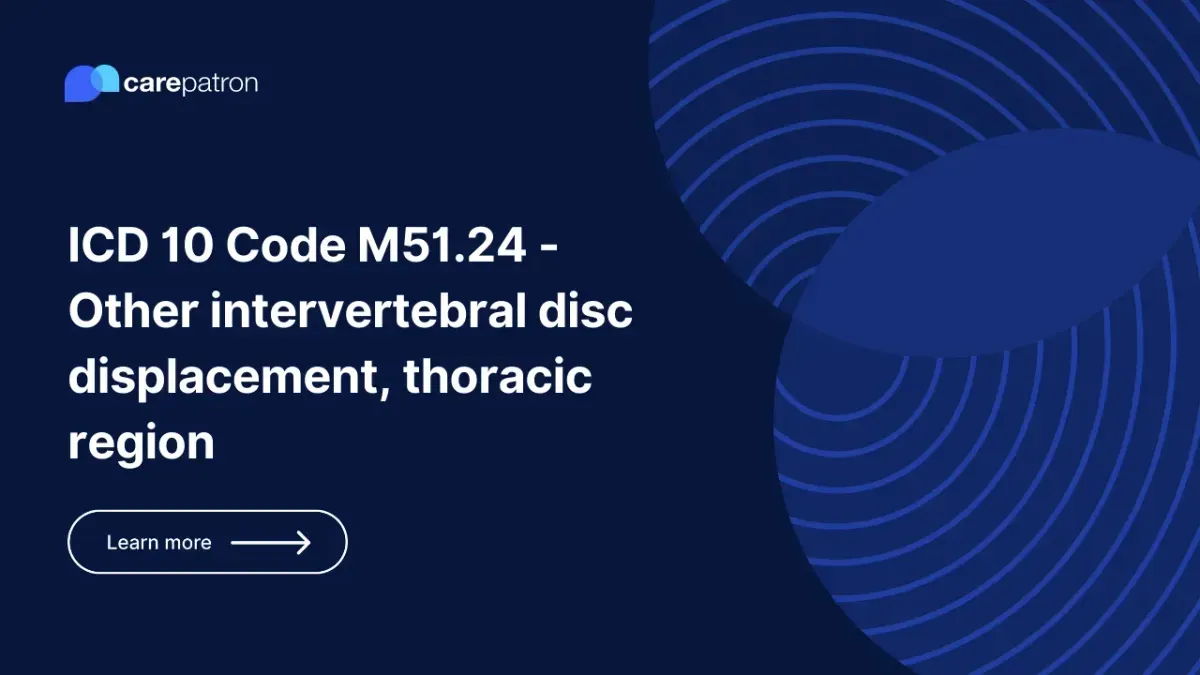
M51.24 – Other intervertebral disc displacement, thoracic region
Learn more about ICD code M51.24, its diagnosis, billability, clinical details, synonyms, related codes, and FAQs.
Use Code
Commonly asked questions
The CPT code M51.24 is not a CPT code but an ICD-10-CM diagnosis code that specifies "Other intervertebral disc displacement, thoracic region," used to document and classify displacement of an intervertebral disc in the thoracic spine causing pain or neurological symptoms.
The ICD-10 codes for thoracic, thoracolumbar, and lumbosacral intervertebral disc disorders fall under the category M51, with specific codes such as M51.0 for disorders with myelopathy, M51.1 for those with radiculopathy, and M51.2 for other intervertebral disc displacement in these regions.
The ICD-10 code for a thoracic disc bulge is not explicitly listed in the search results, but it would generally be classified under thoracic intervertebral disc disorders, possibly coded as M51.24 for other disc displacement in the thoracic region if displacement is involved; otherwise, a more specific code might be used depending on the clinical details.
EHR and practice management software
Get started for free
*No credit card required
Free
$0/usd
Unlimited clients
Telehealth
1GB of storage
Client portal text
Automated billing and online payments
